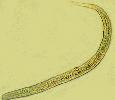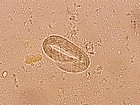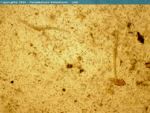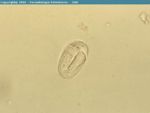Difference between revisions of "Strongyloides"
Jump to navigation
Jump to search
(Created page with '[[Image:Strongyloides stercoralis 2.jpg|thumb|right|150px|''Strongyloides stercoralis'' - Courtesy of the Laboratory of Parasitology, University of Pennsylvania School of Veterin…') |
|||
| Line 3: | Line 3: | ||
[[Image:Strongyloides larvae.jpg|thumb|right|150px|''Strongyloides'' larvae - Joaquim Castellà Veterinary Parasitology Universitat Autònoma de Barcelona]] | [[Image:Strongyloides larvae.jpg|thumb|right|150px|''Strongyloides'' larvae - Joaquim Castellà Veterinary Parasitology Universitat Autònoma de Barcelona]] | ||
[[Image:Strongyloides.jpg|thumb|right|150px|''Strongyloides'' - Joaquim Castellà Veterinary Parasitology Universitat Autònoma de Barcelona]][[Category:Rhabditoidea]] | [[Image:Strongyloides.jpg|thumb|right|150px|''Strongyloides'' - Joaquim Castellà Veterinary Parasitology Universitat Autònoma de Barcelona]][[Category:Rhabditoidea]] | ||
| + | |||
| + | === ''STRONGYLOIDES WESTERI'' === | ||
| + | ==== General ==== | ||
| + | *Rhabditoid, small intestine. | ||
| + | *Commonest in foals <6months old. | ||
| + | *FIRST PARASITE TO WHICH FOALS ARE EXPOSED. | ||
| + | |||
| + | ==== Morphology ==== | ||
| + | *<6mm long, similar to small trichostrongyles. | ||
| + | *Only female worms parasitic. | ||
| + | *Long oesophagus (up to one third of body length). | ||
| + | |||
| + | ==== Life-Cycle ==== | ||
| + | *Parasitic and free-living (non-parasitic) phases. | ||
| + | *Prepatent period 1week (embryonated egg, 50-60µm). | ||
| + | *Infection by: | ||
| + | **ingestion of L3 in mare's milk or grass; and | ||
| + | **skin penetration. | ||
| + | |||
| + | ==== Pathogenicity ==== | ||
| + | *Foals - severe enteritis, diarrhoea (heavy burdens). | ||
| + | *Adults - normally immune; may act as carriers, e.g. mare. | ||
| + | |||
| + | ==== Control ==== | ||
| + | *Regular anthelmintic treatment. | ||
| + | *Good hygiene. | ||
Revision as of 22:08, 26 April 2010
STRONGYLOIDES WESTERI
General
- Rhabditoid, small intestine.
- Commonest in foals <6months old.
- FIRST PARASITE TO WHICH FOALS ARE EXPOSED.
Morphology
- <6mm long, similar to small trichostrongyles.
- Only female worms parasitic.
- Long oesophagus (up to one third of body length).
Life-Cycle
- Parasitic and free-living (non-parasitic) phases.
- Prepatent period 1week (embryonated egg, 50-60µm).
- Infection by:
- ingestion of L3 in mare's milk or grass; and
- skin penetration.
Pathogenicity
- Foals - severe enteritis, diarrhoea (heavy burdens).
- Adults - normally immune; may act as carriers, e.g. mare.
Control
- Regular anthelmintic treatment.
- Good hygiene.



